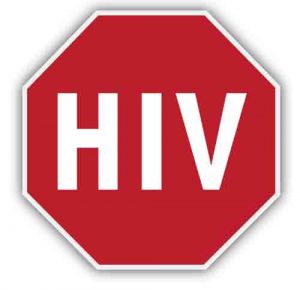
RIVERSIDE, Calif. – An estimated 1.2 million people live with HIV in the United States, with nearly 13 percent being unaware of their infection. New research by Brandon Brown in the School of Medicine at the University of California, Riverside and colleagues has found that patients diagnosed late in the course of HIV infection are more likely to transmit HIV to others since they are not on treatment to suppress the viral load and could be transmitting HIV without knowing they are doing so.
Further, these patients are at an increased risk of negative health outcomes such as premature death, increased risk of HIV transmission, and opportunistic infections such as Kaposi’s sarcoma, Pneumocystis carinii pneumonia, and toxoplasmosis.
The research was conducted in Riverside County, Calif., the sixth most HIV/AIDS-impacted county in the state. Brown, an assistant professor in the Center for Healthy Communities, and his colleagues examined the prevalence and risk factors for county residents who have an AIDS diagnosis within 12 months of their first HIV-positive test.
“Although free confidential testing is available throughout Riverside County, more than 30 percent of new HIV diagnoses qualified as late-to-test, that is, they received an AIDS diagnosis within 12 months of a seropositive HIV result,” Brown said. “Earlier diagnosis is a critical component in preventing onward transmission of the virus and represents missed opportunities for treatment.”
Study results appear in the September 2016 issue of Medicine.
The researchers found:
- An increased risk of late HIV testing among those who were between 45 and 64 years of age and the uninsured (this group is less likely to test)
- An increased risk for late testing among Hispanics but not other racial/ethnic minorities (this is likely due to a larger proportion of Hispanics who participated in the study in Riverside County, compared to other racial/ethnic minorities)
- A reduced risk among women and those who live in the eastern part of the county (this is due to extensive HIV prevention activities in this region, including Get Tested Coachella Valley, and
- Those who were foreign born were more likely to be late testers (this is perhaps due to less access to healthcare).
The study used data from HIV surveillance and medical records to identify risk factors for late-testing. The researchers identified factors associated with getting tested late, and next will plan studies to intervene with those who were late to test.[xyz-ihs snippet=”adsense-body-ad”]“More outreach for HIV testing needs to be done with those who are uninsured, over 45 years of age, and foreign born,” Brown said. “HIV testing is important for everyone, and most important if done early to extend life, to prevent transmission, and to save on medical costs. Universal testing, the gold standard, is not routinely practiced. We are working to change this.”
The Centers for Disease Control and Prevention (CDC) recommends everyone between 13 and 64 get HIV testing as part of routine health care, but this is not routinely practiced for several reasons. These reasons can include discomfort in broaching the HIV testing topic by doctor and/or patient, other priorities at the patient visit, and belief that the patient is low risk for HIV.
Brown was joined in the study by Aaron T. Gardner and Rachaline Napier at Riverside University Health System Public Health.
Their analysis included a total of 1,385 Riverside County residents with an HIV diagnosis. The researchers used data (January 2009 to December 2014) from the Enhanced HIV/AIDS Reporting System maintained by the Office of AIDS, California Department of Public Health.
More than two-thirds of the residents in the study were male (88 percent), born in the US (72 percent), and either white or Hispanic (48 percent and 36 percent, respectively). Mean age was 39.5 years. Forty percent of the participants were from western Riverside County. The most common reported mode of HIV transmission was through men who have sex with men (70 percent).
“Our analysis provides important insights,” Brown said. “We need to expand testing services, particularly in places with a high density of uninsured and/or Hispanic residents. Routine testing, recommended by the CDC, is cost effective, and should be promoted. Such testing can significantly increase the time period between an HIV-positive diagnosis to an eventual AIDS diagnosis, and can lead to longer and healthier lives for those infected with HIV.”
Source: UCR
[xyz-ihs snippet=”Adversal-468×60″]
